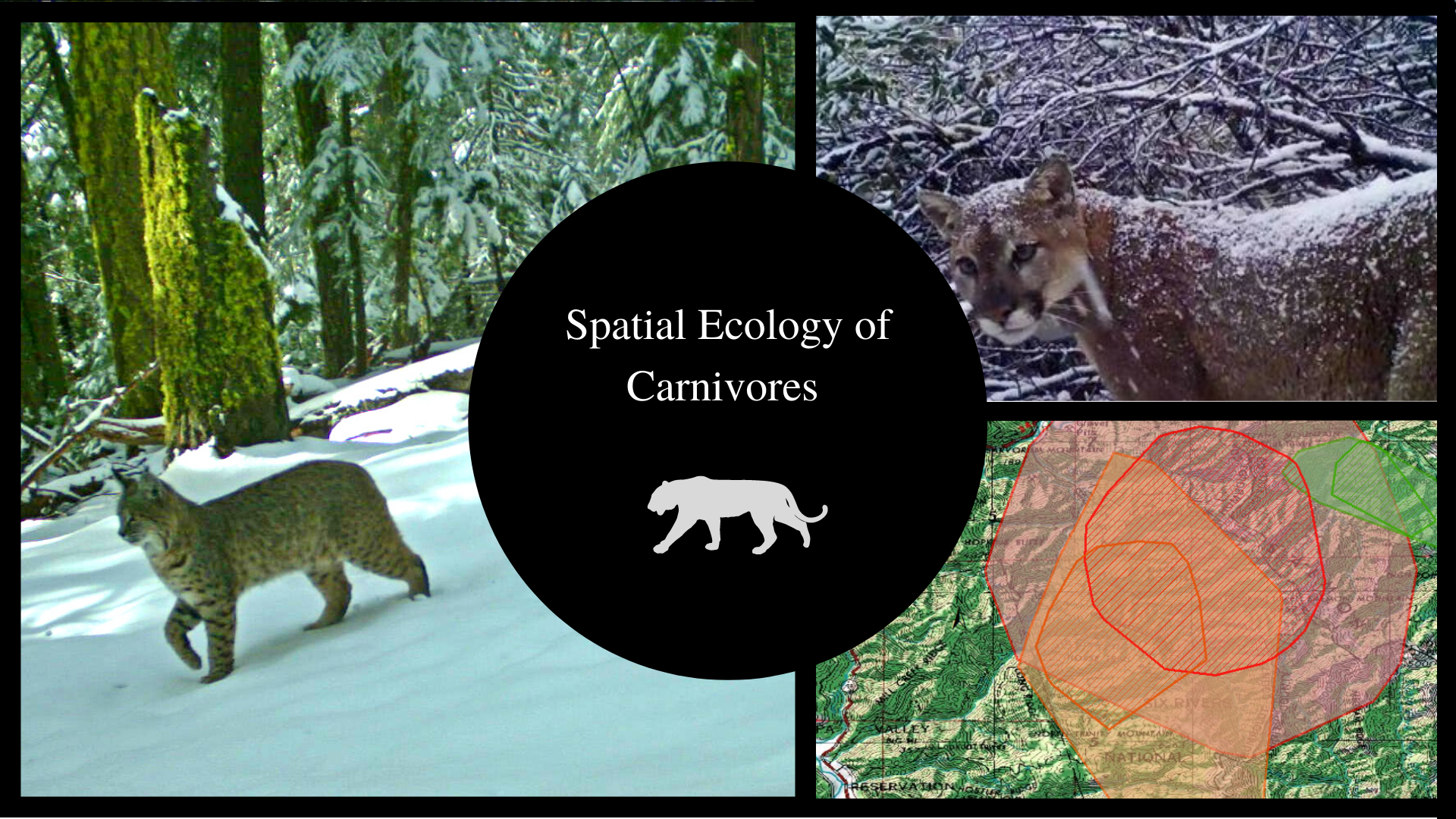
A keystone species is a species that has a significant influence on an ecosystem, yet is low in number when compared to the rest of its community assemblage. The role of the keystone species can be filled by various taxa, including plants, wildlife, fish, and even invertebrates. A goal of IERC is to investigate their behavior or their role on a landscape level. We are focusing on two species, the mountain lion (Puma concolor) and the bobcat (Lynx rufus), in northern California. IERC is collaborating with the Hoopa Tribe, Pacific Southwest Research Station’s Kings River Fisher Project, and Sierra Nevada Adaptive Management Project in an investigation of the habitat and space use of bobcats and mountain lions in relation to fishers. Bobcats are the primary predator of fishers in the West, and mountain lions also have a significant impact on fisher populations.
Objective: IERC scientists are placing GPS and satellite collars on mountain lions and bobcats in northern California and the southern Sierra Nevada to determine the habitats they use, their movement through fisher habitat, and around VHF-collared fishers, and whether private or public land cannabis cultivation sites impact their movement and behavior. We are investigating kill sites of these species and collecting relevant tissues to investigate if pesticides are contaminating these apex carnivores through their prey. Finally, we are conducting active restoration of cannabis sites near and within marked individuals’ home ranges to monitor any changes in their activity patterns.
